Last Updated on March 19, 2024 by Masha Eretnova
Gouache, also known as opaque watercolor, works so well on paper, yet many beginners wonder if there are other options, like canvas.
I tested my Miya gouache on simple gesso-primed canvas and I’ll share what I liked and didn’t quite enjoy in the process.
Spoiler: Gouache painting works better on paper, canvas pads, and canvas paper, or on porous canvas primed with watercolor ground.
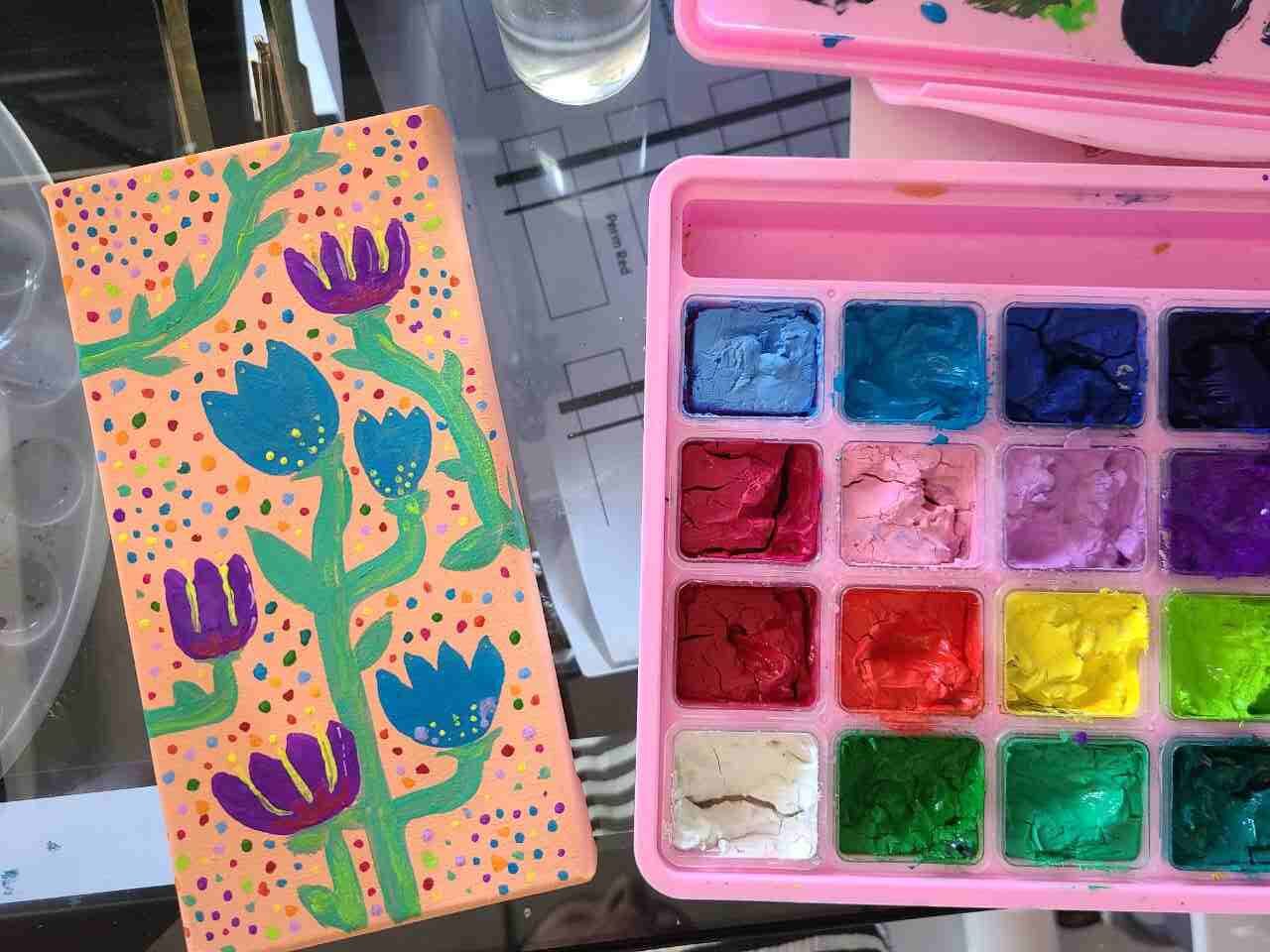
This article contains affiliate links. It means no extra cost for you but a little commission (2-3%) for me to support my hobby and blog. Thank you!
Gouache on canvas: Pros and Cons
Gouache is a versatile water-based paint that sticks to paper, canvas boards, and canvas easily.
You can use gouache on both raw and primed canvas, canvas paper, and mini-canvases, cotton or linen canvases.
Yet, if you like to use it more like watercolor, the paper would work better as you need a high absorbency surface.
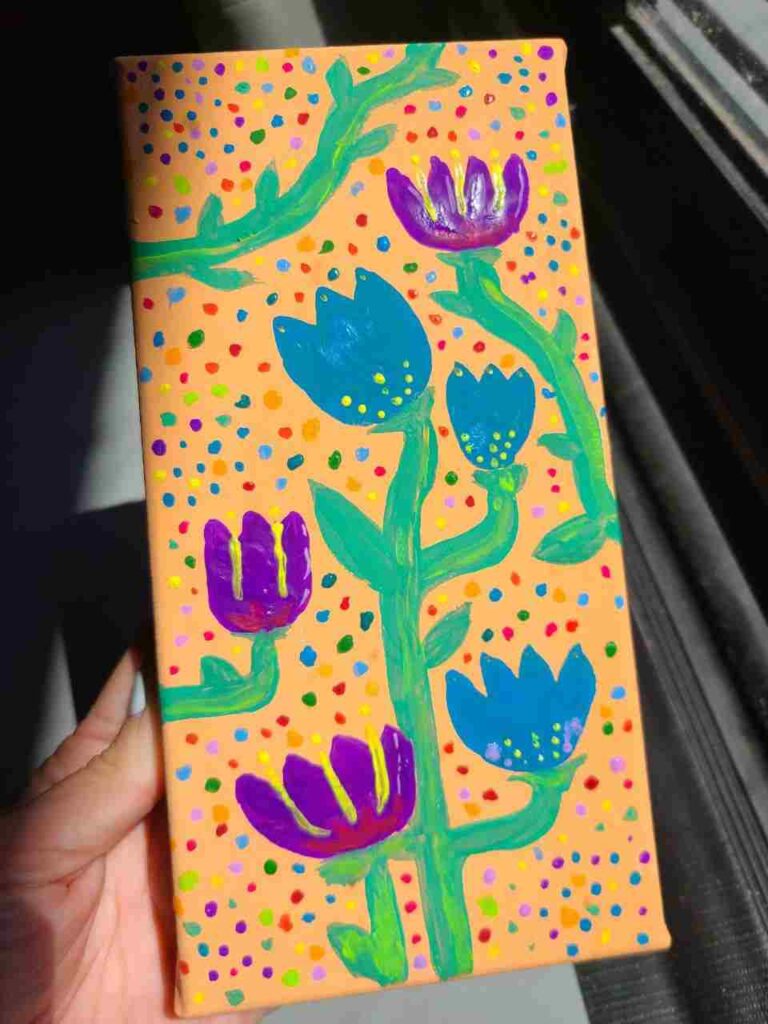
Read also: Best Canvas for Beginners [Full Bueyrs Guide]
The main disadvantage and potential risk of using gouache on canvas vs acrylic is that gouache can crackle while drying.
Gouache can dry to a matte finish and might rehydrate when water is applied to it, which can be both an advantage and a challenge depending on your artistic intentions.
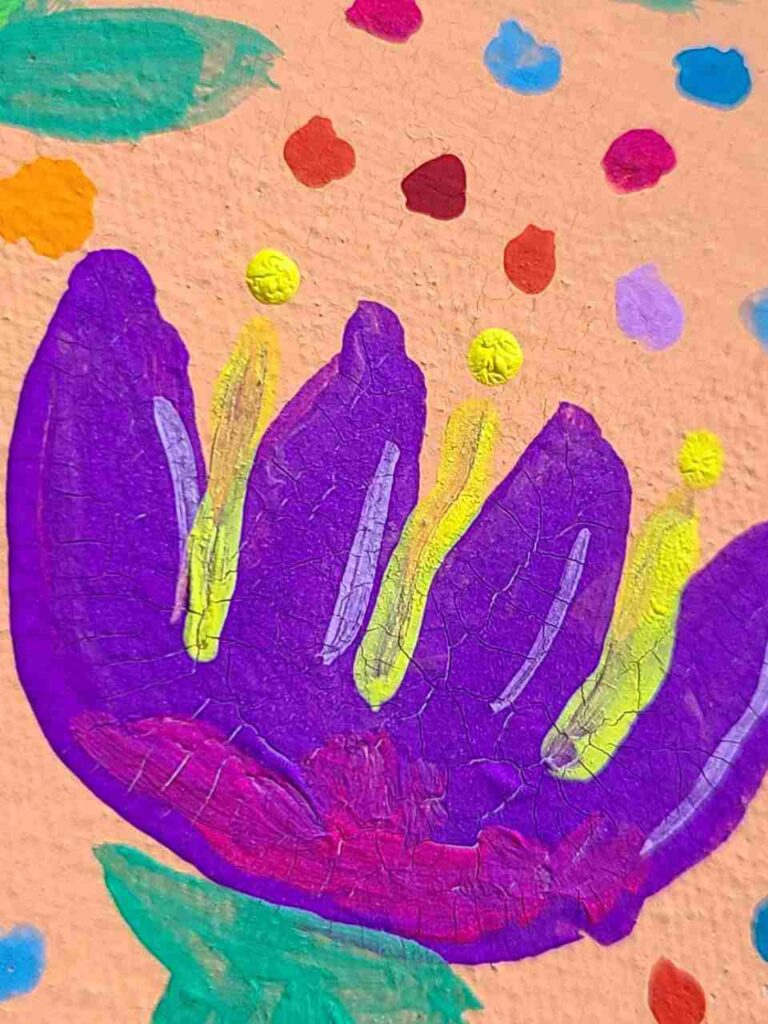
I do believe that using gouache on canvas can be justified if you are looking for applying a few layers, thin of course, and will be better on small canvases.
I’ve researched what Winsor & Newton said about their gouache and it is better for paper and the same as watercolor, gouache doesn’t suit well-primed canvas.
Read also: Gouache Vs Acrylic: Major Difference Between Gouache And Acrylic
Use a canvas that is primed right
I noticed that gouache doesn’t really stick well to acrylic gesso.
Instead, I suggest using 2-3 coats of watercolor ground or clear gesso to prep the canvas before using gouache.
I wouldn’t;t use gouache on raw canvas. It is extraordinarily porous and it soaks paint like a vacuum machine. So I’m not sure it is a good way to waste the paint.
When I was testing gouache on primed canvas, I noticed that with more water gouache sticks to canvas worse sometimes but water helps improve the coverage.
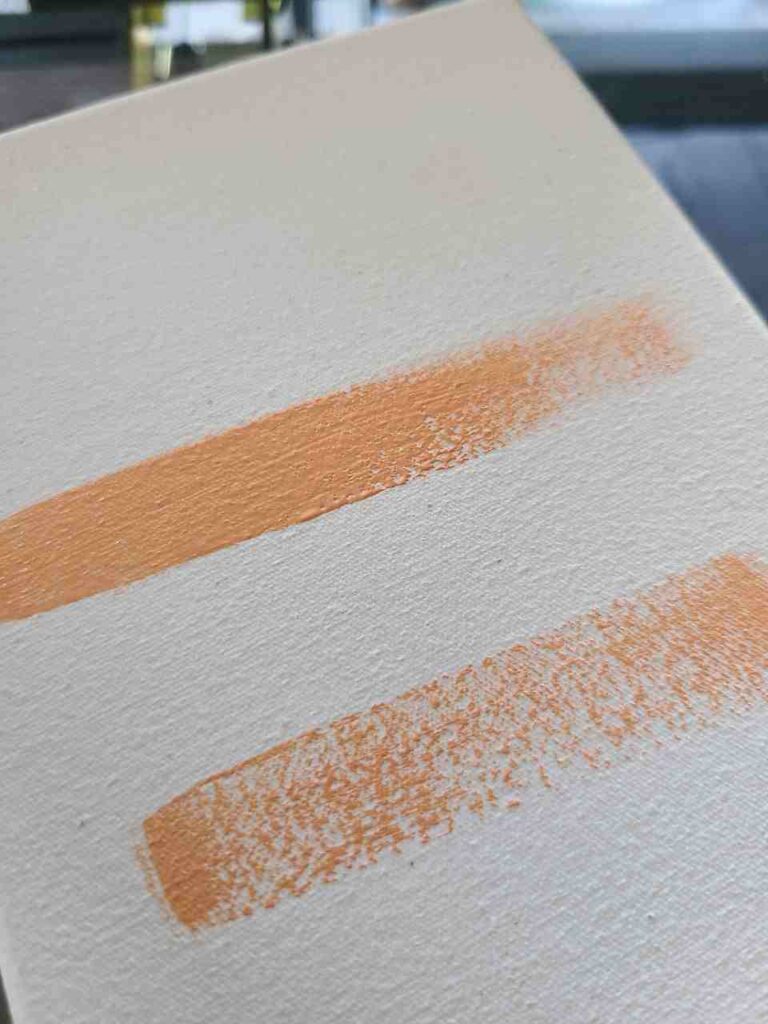
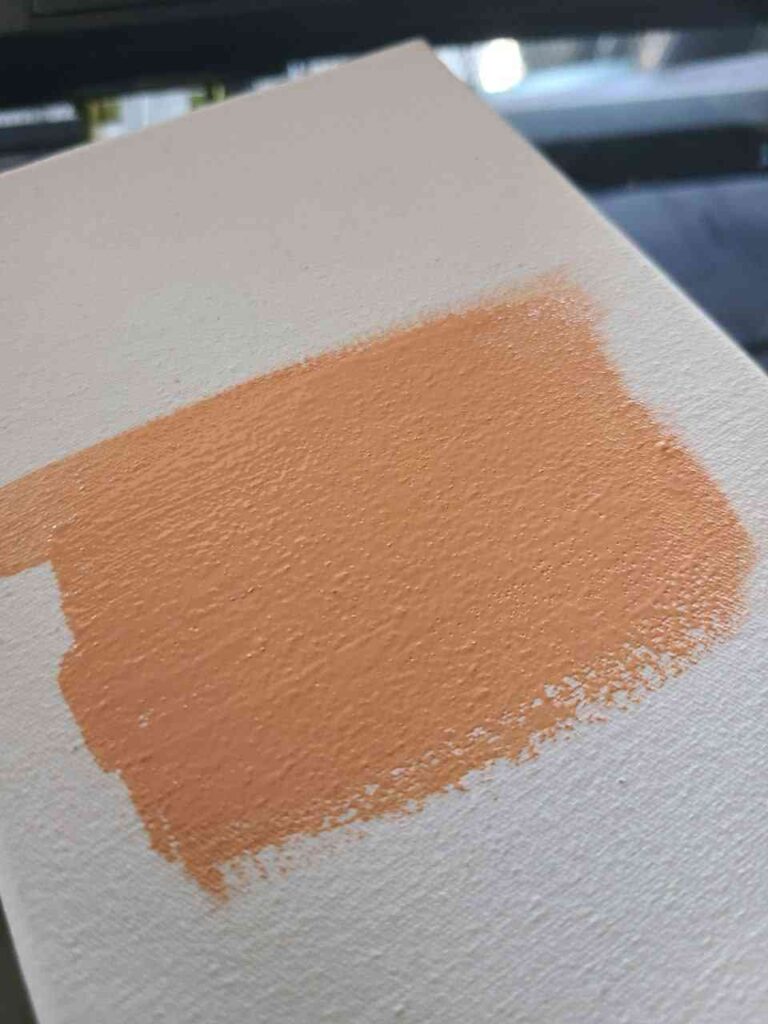
With just a dry brush I had issues with covering the canvas surface so it is not seen through the paint.
Yet, some spots are still white (canvas) and I wonder now if it’s because the canvas was primed with gesso!
I would also recommend using watercolor ground to prepare the canvas for gouache paints. Daniel Smith has a good one (Reddit-approved).
- Absorbent or semi-absorbent surfaces (such as paper, canvas, other fabrics, Wood, plaster, shells and hardboard) require no special prep before brushing on Daniel Smith watercolor ground
3 years ago I also used cheap Reeves gouache on canvas panel and it worked amazing. I still have that painting and it didn’t peel, crack or anything.
It only suffered from water but not too much (in the bottom right corner)
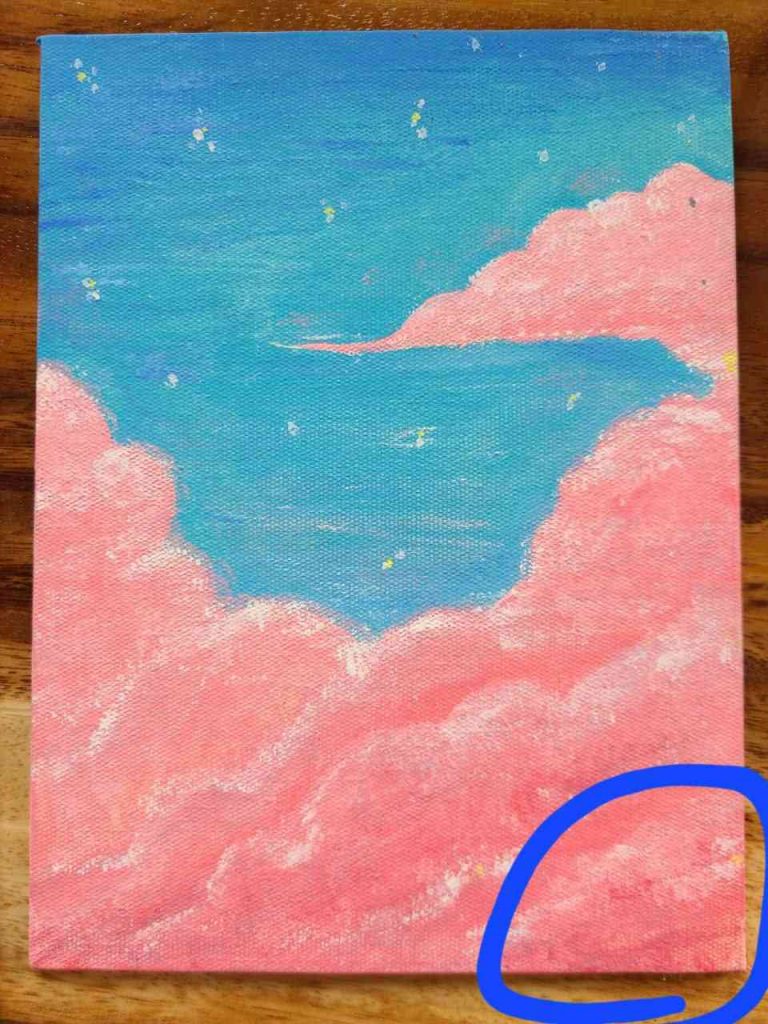
Only use stretched canvas
It is important to only use a stretched canvas (raw or primed doesn’t matter) for gouache painting.
If you use gouache on unstretched canvas the surface will likely be manipulated somehow once you’re done. You will move it, store it somewhere, or even fold it.
You cannot fold or roll a canvas painted with gouache as the paint will crack or even peel in folds.
It won’t be easy to stretch gouache-painted canvas either, as gouache is not as durable as acrylic and cannot withstand pulling or rubbing.
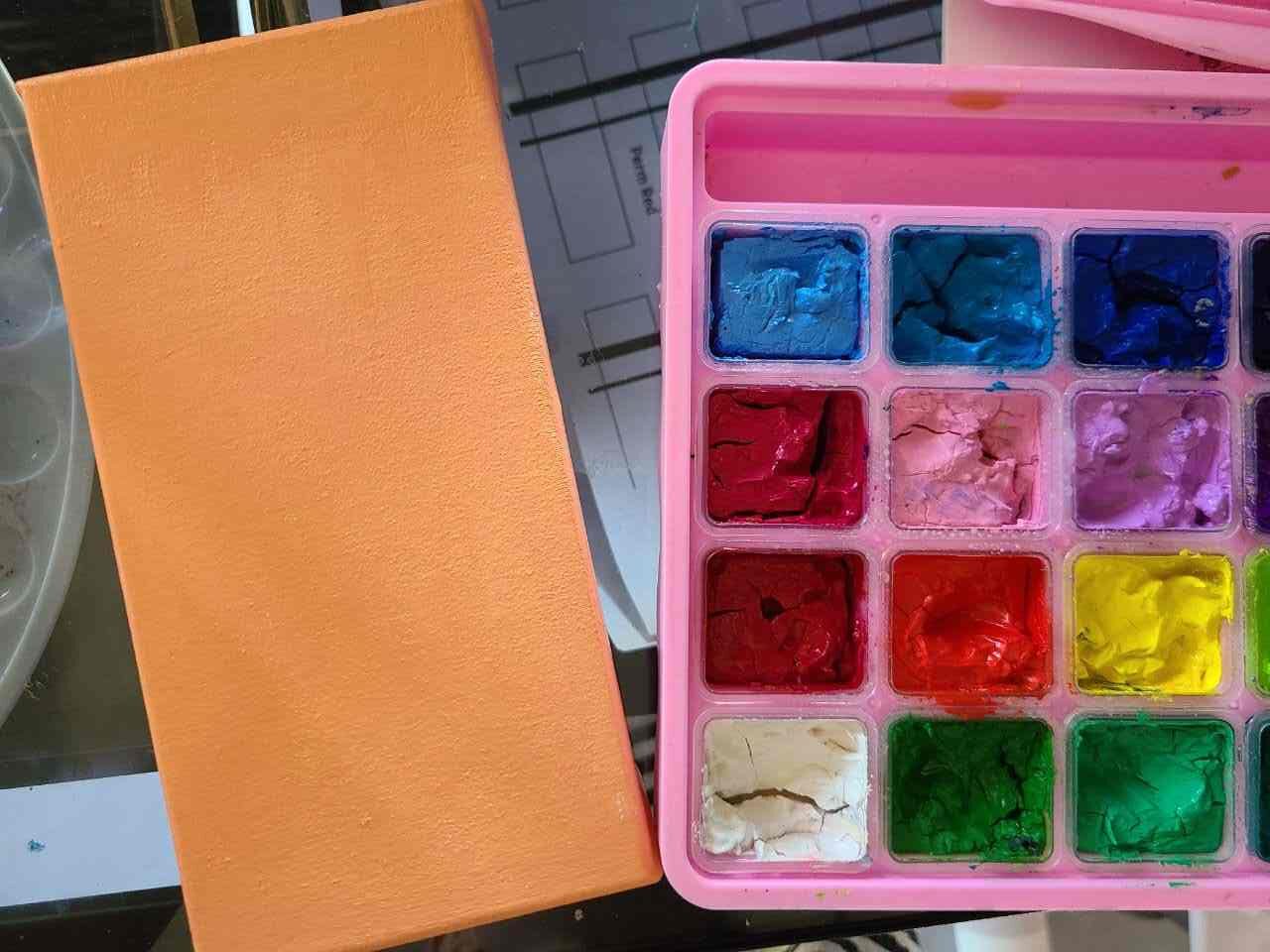
It may eventually crack or peel off…
The main downside of using gouache on canvas is that it is non-permanent paint.
Gouache can start cracking and flaking off the canvas immediately once it is dry, but it also can take a few days/years before it happens.
Immediately after painting and drying you can barely see any crackle net or deep cracks:
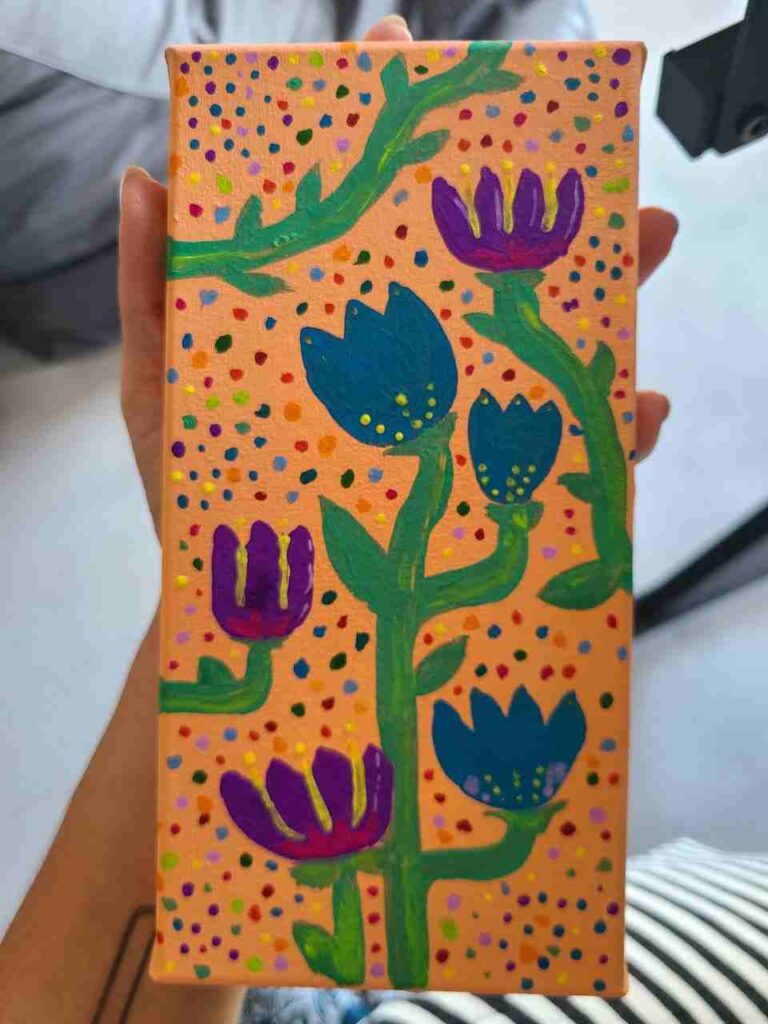
After 5 days one area has visible cracks. I think this area has thick paint applied but it wouldn’t happen with acrylic paint.
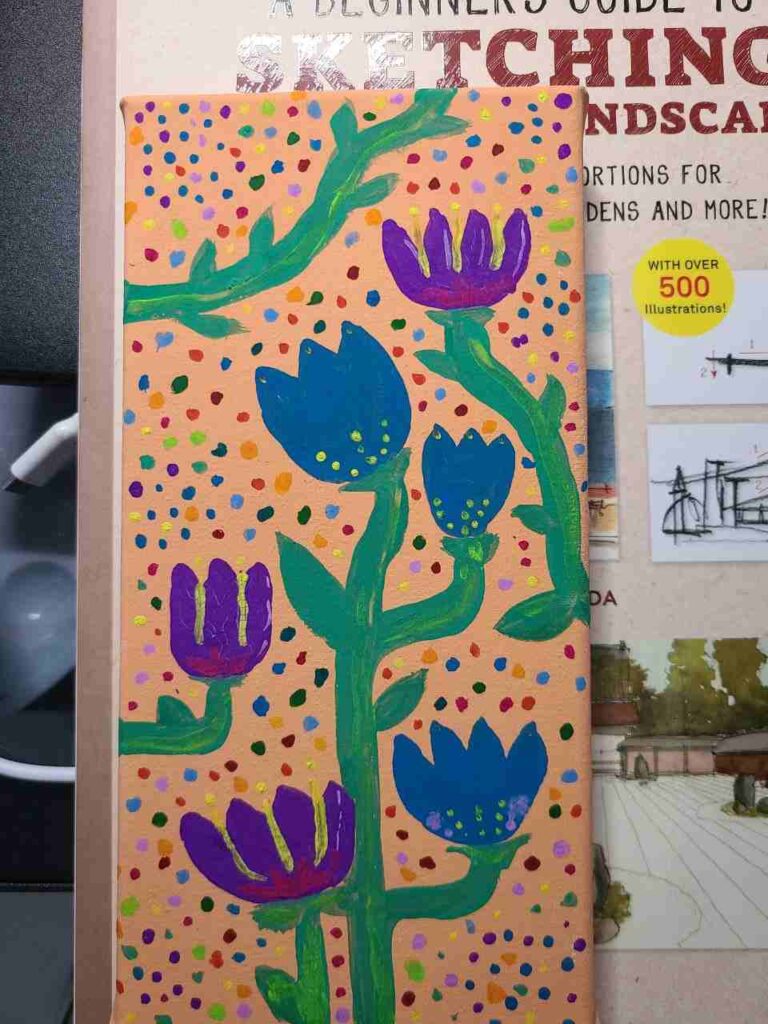
My test gouache on canvas started crackling almost immediately, yet, it is almost invisible until you will get super close and inspect almost with a magnifying glass.
It can also be the problem with the paint, I used Miya set (jelly gouache) but I’ve used it many times before on paper and it works amazing.
I took these photos with Zoom X3 on my phone:

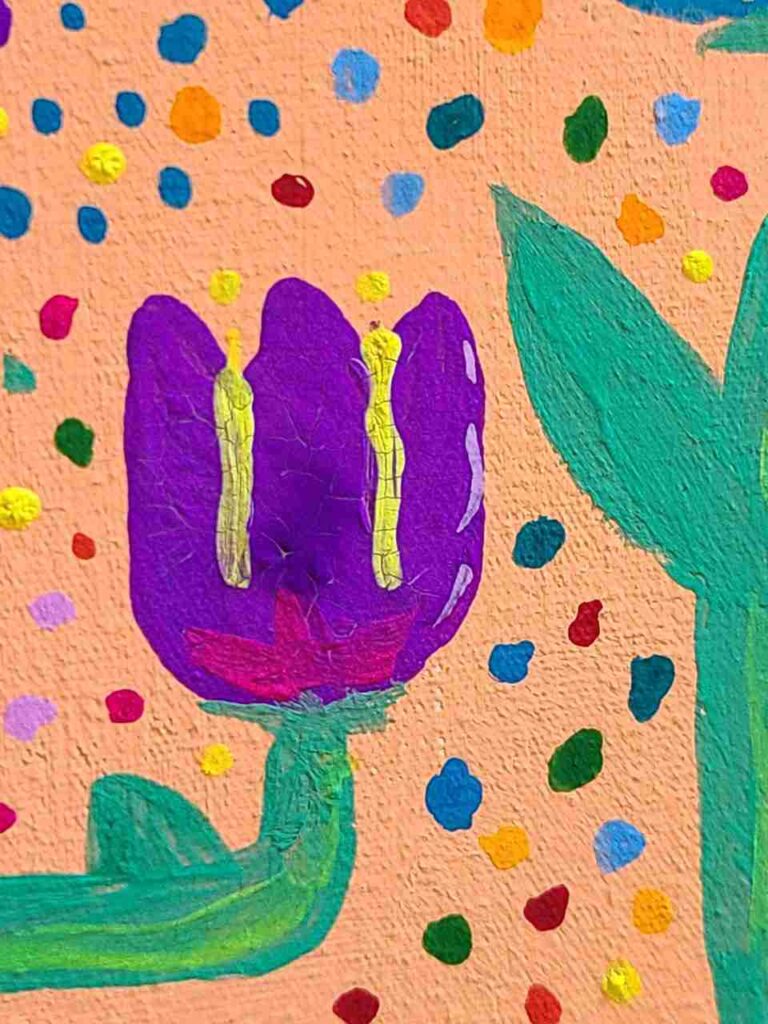
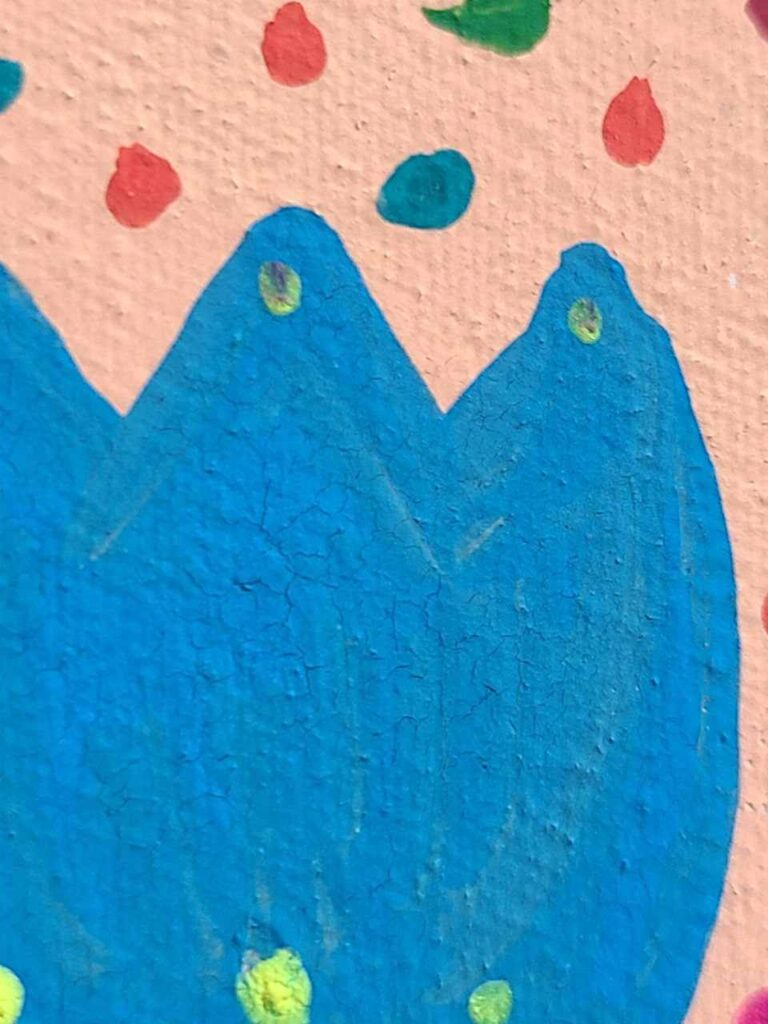
I think working with gouache, especially traditional gouache, may limit the choice of gouache painting techniques you can use and pose an invisible threat of crackling.
Gouache paint doesn’t work on canvas as well as acrylic paints or oil paint, nor it can handle the same amount of water as watercolor paint when applied on canvas.
Seal your gouache painting on canvas
The only solution is to somehow seal the painting, which is quite tricky with gouache.
The varnishing gouache process is not completely advised yet there are some fixatives or watercolor varnishes/gouache varnishes you can try.
An isolation coat may also be needed to protect gouache work from varnish itself (especially if using non-removable varnish)
It will ultimately protect the painting from water, humidity and hopefully cracking.
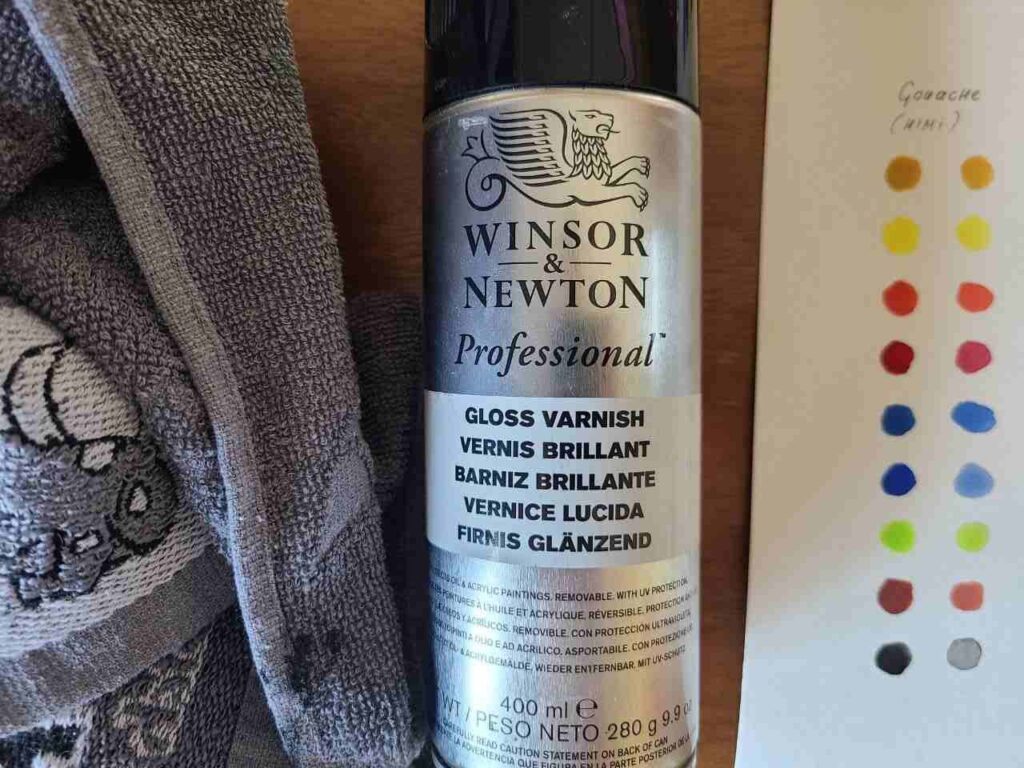
I have successfully used acrylic spray varnish but it is best to use watercolor/gouache varnish or place the painting in a frame with glass.
Tips for Using gouache paint on canvas
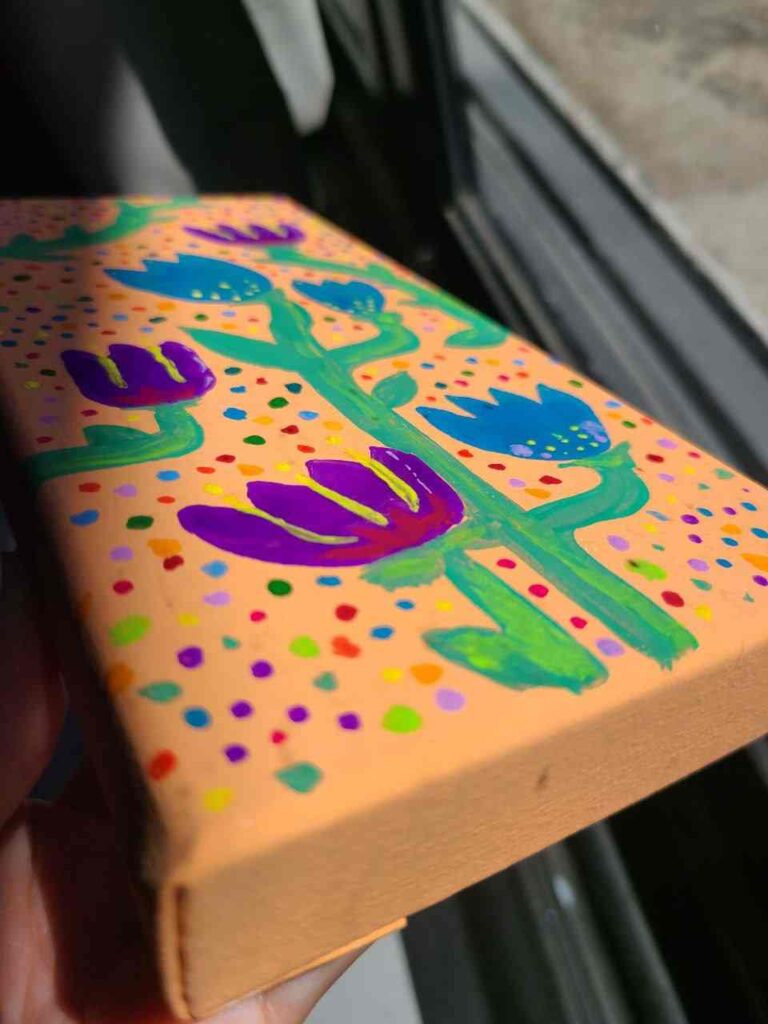
- Test on a little area of gessoed canvas. Wait until it dries. If it works without cracks – good. If not, buy raw canvas and prep it with watercolor ground or switch back to paper.
- Do not apply thick layers of paint, it may crackle. With too much water it can also crackle.
- Use a fixative in between layers to protect the finished painting.
- The canvas should be well stretched, don’t fold the canvas painted with gouache – the paint will crack and chip off.
- Acrylic gouache may be a better choice for canvas than regular gouache.
- Be careful with water. Gouache is never permanent, so a drop of water will reactivate the layers of paint.
- Gouache works best on smooth surfaces, so if the texture of the primed canvas is too coarse try sanding it lightly.
More tips on gouache art: 21 Top Gouache Painting Tips & Secrets From Pros
FAQ
Is gouache better on paper or canvas?
While it is ok to use gouache on raw or primed canvas, gouache paints perform better on paper vs canvas, as they can crackle on canvas.
Can you wash the gouache off the canvas?
If you are using traditional gouache you can easily wash it off the canvas with water and some rubbing.
Acrylic gouache is water-resistant once dry and you won’t be able to remove it from canvas with water.
Can I use gouache on watercolor canvas?
Gouache works amazingly on watercolor paper and any paper in general and. Gouache will work better on watercolor canvas vs regular canvas as watercolor canvas is made for watercolors and gouache and allows using water and different techniques.
Final Thoughts
In conclusion, using gouache on canvas can be a creative and rewarding choice if you want to experiment.
While gouache is traditionally associated with paper, you can still use it on canvas paper, canvas board, pads, and panels as well as raw or primed canvas.
I think it’s good to achieve the right consistency when you use gouache on canvas: not too much water, but just enough to ensure good coverage and thin layers.
Remember that proper preparation is key – applying a layer of gesso works best for acrylic paintings, but for gouache unprimed canvas, clear gesso or watercolor ground is better.
Gouache on canvas feels like chalk (if traditional or jelly) or has a velvety matte finish and maybe something different and refreshing from the look other paints and mediums like oils or acrylics have.

Masha Eretnova, born in 1991, is a Buenos Aires-based certified teacher, artist, and member of the Professional Artist Association with 20+ years of personal painting journey.
She started painting and drawing very early and is now an international abstract artist and educator passionate about acrylic painting, gouache, and crafts.
Her works are part of international exhibitions and contests, including ArtlyMix (Brazil), Al-Tiba 9 (Spain), Exhibizone (Canada), Italy, and many more.
Besides her artistic pursuits, Masha holds a post-grad diploma in Teaching Film Photography and 2 music school diplomas: piano and opera singing.
Last update on 2024-07-26 / Affiliate links / Images from Amazon Product Advertising API
